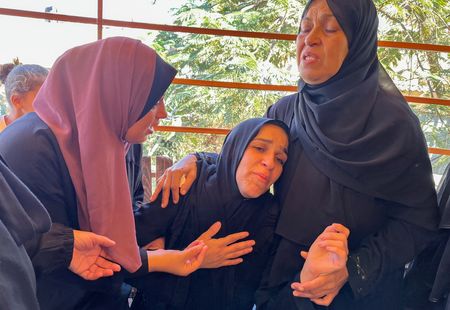BEIRUT (Reuters) – Hashem Safieddine, whose killing was confirmed by Hezbollah on Wednesday, briefly helped run Lebanon’s strongest military and political force as the presumed successor to its slain leader Hassan Nasrallah, until he, too, was tracked down by Israel.
His death marked Israel’s latest heavy blow to Hezbollah, a now weakened organisation facing its biggest crisis since Iran’s Revolutionary Guards created it in 1982 to fight Israeli occupation.
A relative of Nasrallah, Safieddine ran the movement alongside its deputy secretary general Naim Qassem since Nasrallah’s assassination by Israel in an airstrike on Beirut’s southern suburbs on Sept. 27.
A Lebanese security source said on Oct. 5 that Safieddine had been out of contact since the day before, after an Israeli strike on Beirut’s southern suburbs late on Oct. 3 that Axios cited three Israeli officials as saying was aimed at Safieddine.
Safieddine sat on the group’s Jihad Council – the body responsible for its military operations. He also headed its executive council, overseeing financial and administrative affairs for the Iran-backed group.
While not as well-known to Israelis as Nasrallah, Safieddine was seen by Israel as a leading target in what it deems a terrorist organisation and a proxy for arch-foe Iran.
Safieddine assumed a prominent role speaking for Hezbollah during the past year of hostilities with Israel, addressing funerals and other events that Nasrallah had long avoided for security reasons.
He was the first Hezbollah official to speak in public after the group’s Palestinian ally Hamas attacked southern Israel on Oct. 7, 2023, igniting the Gaza war that drew the Lebanese Shi’ite Islamist movement into a parallel conflict with Israel.
With observers across the Middle East waiting to see what Hezbollah might do to help Hamas, Safieddine told a rally in Beirut’s southern suburbs the day after the attack that the group’s “guns and our rockets are with you”.
STRONG TIES TO IRAN
“Everything we have is with you,” Safieddine declared.
Like Nasrallah, Safieddine wore the black turban denoting his status as a sayyed, or descendent of the Prophet Mohammed. He bore a strong physical resemblance to Nasrallah.
He hailed from a prominent Lebanese Shi’ite family, and was born in the country’s predominantly Shi’ite south.
Safieddine studied at religious seminaries in the Iranian city of Qom before returning to Lebanon in the 1990s to assume leadership responsibilities in the group.
He maintained strong ties to Hezbollah’s backers in Iran.
His son, Rida, is married to the daughter of the late Iranian general Qassem Soleimani, head of Iran’s Revolutionary Guards’ Quds Force until he was killed by a U.S. drone strike in Baghdad in 2020.
His brother, Abdullah, serves as Hezbollah’s representative in Tehran.
As executive council chief, Safieddine played a role some likened to that of prime minister of a government, responsible for an array of Hezbollah institutions involved in health care, education, culture, and construction, and other activities.
He led efforts to rebuild the Hezbollah-controlled southern suburbs of Beirut after the group’s 2006 war with Israel, when swathes of the area were flattened by Israeli airstrikes. In a 2012 speech, Safieddine said the post-war reconstruction had amounted to “a new victory” over Israel.
Phillip Smyth, an expert who studies Iran-backed Shi’ite militias, said Nasrallah “started tailoring positions for him within a variety of different councils within Lebanese Hezbollah. Some of them were more opaque than others”.
The U.S. State Department declared him a specially designated global terrorist in 2017. In response to U.S. pressure on Hezbollah that same year, he said “this mentally impeded, crazy U.S. administration headed by Trump will not be able to harm the resistance”.
(Reporting by Timour Azhari, Angus McDowall, Jonathan Landay and Tom Perry; Writing by Tom Perry and Michael Georgy; Editing by Frances Kerry, William Maclean and Daniel Wallis)












